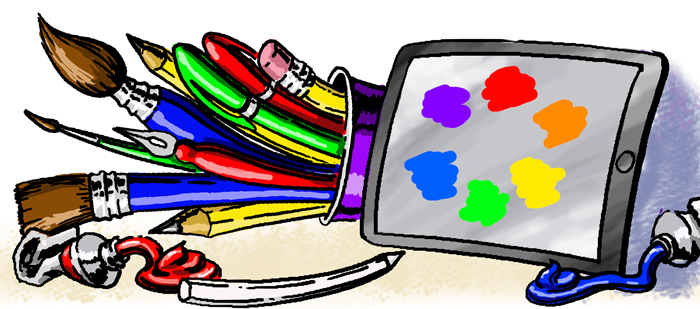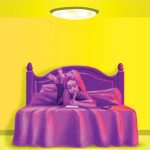This is the third and final installment of my series exploring free digital drawing programs. I did these reviews to educate art students about alternative ways to make art if they are forced out of their art classes because of the pandemic. Even if they don’t have access to supplies and studio space, if they have a computer, they can still make art.
The first installment reviewed Sketchbook, a highly capable, professional-level program that is a joy to work in. Last week, I reviewed Krita, an open-source program that has some nice features but is a bit buggy and not as intuitive as Sketchbook.
This week I tried GIMP, an acronym for GNU Image Manipulation Program. I had heard good things about this program, and it has been around for a long time. Like Krita, it’s a free, open-source application that works on most desktop platforms but not stand-alone tablets.
Adobe Photoshop is the standard that most competing software tries to beat. Sketchbook and Krita are not designed to replace Photoshop. They attempt to surpass its drawing and painting features, but don’t bother with most of its other features. GIMP is designed to be a Photoshop alternative. It covers photo retouching, image composition and authoring, and it has animation and 3-D tools. It also has layers, filters, masks and other advanced features, and can save files in multiple formats.
It sounds great — a free replacement for Photoshop. My experience with it did not live up to the reviews. To be fair, a lot of the reviews praised its photo editing capabilities while I was exploring its drawing functions. But even before I started drawing, I had issues.
When I first launched the program, all the type in the panels and menus displayed as illegible symbols. Restarting my computer resolved the issue, but it happened every day I opened it for the first time.
When I tried to select a different tool than the one I was using, it would immediately switch back to the previous tool. The same thing would happen when I chose a color. As soon as I moved my cursor from the palette to the drawing area it would switch back to the previous color. I finally figured out that if I made the selection with my mouse, instead of my stylus, it would stick. While that may sound like a simple solution, it’s annoying when you are used to drawing and selecting with a stylus and you have to constantly interrupt your workflow to perform usually mindless tasks.
Another big issue is the program’s lack of recognition of pressure sensitivity for the stylus. Normally, the harder you press, the thicker the line gets. It’s a very useful function that makes drawing with a stylus far superior to a mouse. The other programs I use recognize it by default or with a check of a box. In GIMP, I attempted to edit the sensitivity, but the line would change thickness randomly. A search for a fix turned up complex coding solutions that someone who just wants to draw shouldn’t have to bother with.
I work on a Cintiq tablet connected to a Macintosh, which is a pretty common setup for professional artists. I don’t know if the performance issues are related to my gear or if they occur across all platforms. You may have better luck with a different system.
My recommendation for artists who want to try working digitally is to use Sketchbook. It’s a wonderful program. Krita and GIMP appear at the top of all the online lists of best free drawing programs, but my experience with them was not good.

Kevin OʼNeill has been a staff artist for The Times-Tribune since June 1993. In addition to doing illustrations and infographics and designing pages for the paper’s print and electronic publications, he writes InSites, a weekly column about websites and apps. Contact: koneill@timesshamrock.com; 570-348-9100 x5212




